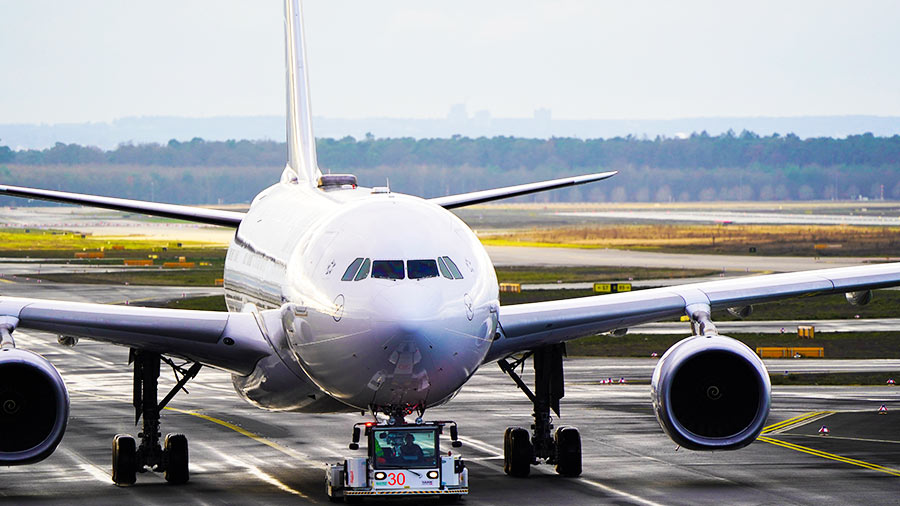On June 2, 2021, the Association of Southeast Asian Nations (ASEAN) and the European Union (EU) concluded the world’s first block-to-block air transport agreement through the ASEAN-EU Comprehensive Air Transport Agreement (AE CATA).
The AE CATA, once formalized, will strengthen connectivity between the EU and ASEAN, decimated by the pandemic. The agreement allows airlines in ASEAN and EU countries to offer unlimited non-stop passenger and freight services between the two regions.
In addition, airlines will also be able to perform up to 14 weekly passenger services with a stopover in the other region to pick up return passengers. There is no limit for cargo flights. ASEAN and the EU hope the deal will make their respective airlines more competitive, as their international air routes are currently dominated by carriers from the Middle East.
It is important to note that the AE CATA can increase cooperation in technical areas, such as aviation safety, consumer protection, air traffic management and environmental issues.
Meeting the growing demand for air travel in ASEAN
Rapid economic growth, increasing urbanization and a swelling middle class have been attributed to the pre-pandemic increase in demand for air travel to and from ASEAN.
The open skies in Southeast Asia will offer a wealth of opportunities as traditional obstacles, such as route constraints and restrictive airspace, will be removed.
In addition, partnership with ASEAN airlines, inter-airline agreements, codeshare or the establishment of an airline alliance can give EU airlines access to a market. dynamic of 650 million people, of which more than 130 million already belong to the middle class; this figure is expected to rise to 330 million by 2030.
There are currently over 70 airlines in the ASEAN region, with Thai Airways International, Garuda Indonesia and Singapore Airlines regularly winning awards for their service and safety in flight. However, local carriers are not as competitive as their Western counterparts, and AE CETA can help address this issue.
Meanwhile, ASEAN members are also working to create an ASEAN Aviation Authority that will provide a unified regional standard in aspects such as safety policies and flight controls – the EU has already put in place such regulations through the European Aviation Safety Agency.
Growth momentum already exists, as evidenced by new investments made by ASEAN airlines. Indonesian company Lion Air, the country’s largest private airline, has repeatedly broken the record for the largest aircraft order, which includes 234 Airbus A320s for $ 24 billion and an order of $ 22.4 billion. $ 230 for Boeing 737s. 310 million air passengers are expected to contribute $ 50 billion to Indonesia’s GDP by 2035.
Additionally, Singapore Changi Airport has started renovating its Terminal 2, and when completed, the terminal will be able to increase its handling capacity from five million passengers per year (mppa) to 28 mppa. Before the pandemic, Changi Airport was ranked 18th in the worlde the busiest airport, serving 68.3 million passengers.
Potential for the aircraft maintenance, repair and overhaul industry
ASEAN is well positioned to be a hub for the aircraft maintenance, repair and overhaul (MRO) industry.
Thailand has issued targeted incentives for companies that choose Thailand as the base for their MRO activities. The country’s MRO spending from 2015 to 2024 is expected to reach $ 10.6 billion. The country’s major airlines, Bangkok Airways and Thai Lion Air, have all established MRO centers to service their planes and those of airlines serving Thailand and the region.
About 85% of Singapore’s aviation industry is involved in MRO activities, with the city-state playing a small but crucial role in the global aerospace supply chain. The country supports the specialized processes, tooling, labor, testing and logistics. Rolls Royce operates a test facility in Singapore and Collins Aerospace, one of the world’s largest suppliers of aerospace and defense products, has opened a 10,000 square foot innovation center in Singapore.
In addition, Garuda’s maintenance facility (GMF) in Indonesia, AeroAsia, has also seen an increase in MRO services from unaffiliated international airlines.
AE CATA can improve trade between ASEAN and the EU
In addition to liberalizing air transport, AE CATA can enhance reciprocal trade and investment prospects between ASEAN and the EU.
ASEAN is the EU’s third largest trading partner (after China and the United States) with more than 189 billion euros (223 billion dollars) of bilateral merchandise trade recorded in 2020 and 93 billion euros ($ 110 billion) of bilateral trade in services recorded. in 2019.
The EU is by far the biggest investor in ASEAN countries. Some 313.6 billion euros (US $ 370 billion) of foreign direct investment (FDI) stocks went to ASEAN members throughout 2019. In addition, ASEAN investments in the The EU has also grown steadily to reach a total stock of 144 billion euros (170 billion US dollars).
About Us
ASEAN Briefing is produced by Dezan Shira & Associates. The firm assists foreign investors throughout Asia and has offices throughout ASEAN, including Singapore, Hanoi, Ho Chi Minh City, and Da Nang In Vietnam, Munich, and Esen in Germany, Boston, and Salt lake city in the USA, Milan, Conegliano, and Udine in Italy, in addition to Jakarta, and Batam in Indonesia. We also have partner companies in Malaysia, Bangladesh, the Philippines, and Thailand as well as our practices in China and India. Please contact us at [email protected] or visit our website at www.dezshira.com.

